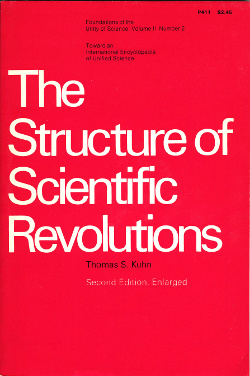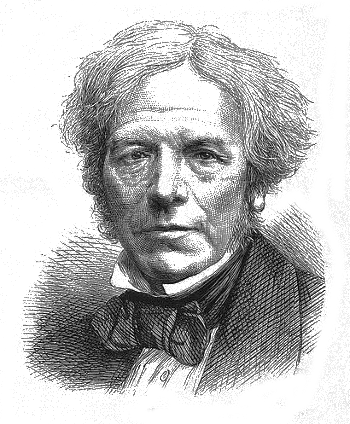History of Nanotechnology
February 16, 2015
Scientists are generally honest people, but there have been egregious counterexamples in the past few
decades. About a decade ago,
physics had the
Schön scandal in which a young
physicist manufactured one
scientific breakthrough after another before his
fraud was exposed. Fortunately, science is built upon a tradition of self-policing in which
experimental observations are only valid if they can be
reproduced, so the deception was eventually uncovered.
One
myth perpetuated about science is that it operates using the so-called
scientific method in which the normal course of science is to generate an
hypothesis, to create
experiments to test that hypothesis, and then, based on the results of the experiments, to either toss the original hypothesis aside, or elevate the hypothesis to a
theory. Often, the hypothesis is actually generated
a posteriori, occurring after an experiment gives an unexpected result.
When science is described in
textbooks and
popular media, another falsehood is presented, that of the
linear,
logical progress of science. As
Thomas Kuhn pointed out in
The Structure of Scientific Revolutions, progress in science occurs as drastic changes in perspective, not as a filling-in-the-blanks exercise. I wrote about Kuhn in an
earlier article (Fifty Years of Paradigm Shifting, February 25, 2013).

Cover of the second edition of Thomas Kuhn's, "The Structure of Scientific Revolutions."
Kuhn wrote that newer theories are so unlike the ones that they replaced, a modern scientist cannot even comprehend the logic of the older theories; in short, there's no such thing as a logical progression in science.
(Scan of my copy.)
Peter Schulz of the School of Applied Sciences of the
State University of Campinas,
São Paulo, Brazil, has posted a paper on
arXiv that examines the purported "
history" of
nanotechnology.[1] The history of nanotechnology is always represented as a linear progression of ideas starting with
Richard Feynman's 1959 lecture, "
There's Plenty of Room at the Bottom," at an
American Physical Society conference.[2] As Schulz writes, that's not really the case.
Feynman's talk concerned a very small subset of nanotechnology; namely, "...the problem of manipulating and controlling things on a small scale." Most of the talk was an exposition on the limits of
lithography, as practiced by the
semiconductor industry. This talk, given just a year after the
invention of the
integrated circuit, was mostly an
analysis of the possibility of writing the text of the huge
Encyclopaedia Brittanica on the head of a
pin.
Nanoparticles were never mentioned, although
de novo creation of novel
materials by adding together
atoms, one at a time, was.
Buckminsterfullerene (the buckyball) was first created by
chemists, and their reward was the 1996
Nobel Prize in Chemistry, but Feynman intended to replace the chemists of his nano-world by
physicists. After all, a chemist's
synthesis is not very efficient. In obtaining his
product he "mixes this and that, and he shakes it, and he fiddles around."[2] The physicist, however, precisely stacks one atom atop another. As Feynman wrote,
"... It is interesting that it would be, in principle, possible (I think) for a physicist to synthesize any chemical substance that the chemist writes down."
So, buckminsterfullerene wasn't predicted by, or inspired by, Feynman's talk. In fact, the way that nanotechnology actually evolved was not presaged at all in Feynman's talk. That's the conclusion made also by
cultural anthropologist,
Chris Toumey, in a 2009 paper in
Nature Nanotechnology.[3]
Schulz writes that a better starting point for the evolution of modern nanotechnology would be a 1956 paper on
molecular engineering by
Arthur R. von Hippel.[4] This paper was published three years before Feynman's 1959 talk. Von Hippel was a preeminent
materials scientist who worked on
radar during
World War II, and he went on to discover the
ferroelectricity and
piezoelectricity of
barium titanate.
Von Hippel was director of an
MIT laboratory that brought together the many scientific specialties that would become contributors to the nanotechnology enterprise. Von Hippel, as quoted by Schulz, wrote in that paper,
“…Instead of taking prefabricated materials and trying to devise engineering applications consistent with their macroscopic properties, one builds materials from their atoms and molecules for the purpose at hand…”
There are other,
chemical roots of nanotechnology, some of them quite ancient, that predate Feynman's talk.
Michael Faraday, who made so many contributions to modern science, mostly through careful analysis of unexpected observations, discovered the special
optical properties of
gold nanoparticles by observation of thin gold sheets under a
microscope. Eventually, he refined his experiments by making
colloids of gold nanoparticles in
solution.[5]

Michael Faraday (1791-1867).
Faraday's name is associated with many things, including the Faraday effect describing the rotation of the plane of light polarization in response to a magnetic field. The unit of capacitance, the farad, is named after him.
(Wellcome Trust, photograph no. V0001863, Via Wikimedia Commons.)
In his experiments, Faraday demonstrated the
Tyndall effect, the
scattering of light by small particles that transforms a
beam of light into a
cone of light. Faraday's colloids, now more than 150 years old, have been preserved, and they are on display at the
Faraday Museum in the
Royal Institution.[5] It's unlikely that any of my laboratory artifacts will survive even a few decades.
Even before Faraday, gold nanoparticles were used as a glass colorant during the time of the Roman Empire.[1] In 1914, just after Faraday, German chemist,
Wolfgang Ostwald (1883-1943), published a book about colloids entitled," Die Welt der vernachlässigten Dimensionen" (The world of neglected dimensions, 1914).[6]
There were three
Nobel Prize awards for colloids. The 1925
Nobel Prize in Chemistry was awarded to
Austrian-
Hungarian chemist,
Richard Zsigmondy (1865-1928) for "his demonstration of the heterogeneous nature of colloid solutions and for the methods he used."[7] The 1926 Nobel Prize in Chemistry was awarded to
Swedish chemist,
Theodor Svedberg (1884-1971), for "his work on
disperse systems."[7] The 1926
Nobel Prize in Physics was awarded to
French physicist,
Jean Baptiste Perrin (1870-1942), for "his work on the discontinuous structure of matter, and especially for his discovery of sedimentation
equilibrium."[7] Perrin verified
Einstein's theory of
Brownian motion.
It was fifteen years after Feynman's talk that the term, "nanotechnology," was coined by
Norio Taniguchi (1912-1999), a
professor at the
Tokyo University of Science.[8] Nanotechnology entered the public spotlight more than a decade after that with
Eric Drexler's 1986 book, "
Engines of creation: the coming era of nanotechnology."[9] Today, nanotechnology is defined more by the
scientific papers published in its name than by any formal definition.
References:
- Peter Schulz, "Nanotechnology: a slightly different history," arXiv, January 30, 2015. Originally published in Portuguese as "Nanotecnologia - uma história um pouco diferente," Ciência Hoje, vol. 308 (October 2013), pp. 26-29.
- Richard P. Feynman, "There's Plenty of Room at the Bottom," Annual Meeting of the American Physical Society, California Institute of Technology (Pasadena, California, December 29, 1959); published in Caltech Engineering and Science, vol. 23, no. 5 (February 1960), pp 22-36 (via zyvex.com).
- Chris Toumey, "Plenty of Gloom and Doom at the Bottom?" Nature Nanotechnology, July 2009, vol. 4, no. 7 (July, 2009), pp. 396-397.
- Arthur von Hippel, "Molecular Engineering," Science, vol. 123, no. 3191 (Feb., 24, 1956), pp. 315-317, DOI: 10.1126/science.123.3191.315.
- Michael Faraday's gold colloids, Royal Institution Web Site.
- Prof. Wolfgang Ostwald, "Die Welt der vernachlässigten Dimensionen, eine Einführung in die Kolloidchemie," Steinkopff Verlag Dresden, 1944, 325 pages (via Amazon.de).
- Lists of Nobel Prizes and Laureates, Nobel Media AB Web Site.
- N. Taniguchi, "On the Basic Concept of 'Nano-Technology'," Proc. Intl. Conf. Prod. Eng. Tokyo, Part II, Japan Society of Precision Engineering, 1974.
- Eric Drexler, "Engines of creation: the coming era of nanotechnology," Anchor Books, 1986 (Free Online Version from E-drexler.com).
Permanent Link to this article
Linked Keywords: Scientist; decade; physics; Schön scandal; physicist; science; scientific; fraud; experiment; experimental; reproducibility; mythology; myth; scientific method; hypothesis; scientific theory; a posteriori; textbook; mass media; popular media; narrative structure; linear; logic; logical; Thomas Kuhn; The Structure of Scientific Revolutions; State University of Campinas; São Paulo, Brazil; arXiv; history; nanotechnology; Richard Feynman; There's Plenty of Room at the Bottom; American Physical Society; photolithography; lithography; semiconductor industry; invention; integrated circuit; analysis; Encyclopaedia Brittanica; pin; nanoparticle; material; atom; Buckminsterfullerene; chemist; Nobel Prize in Chemistry; chemical synthesis; product; chemical compound; chemical substance; cultural anthropology; cultural anthropologist; Chris Toumey; Nature Nanotechnology; molecular engineering; Arthur R. von Hippel; materials science; materials scientist; radar; World War II; ferroelectricity; piezoelectricity; barium titanate; Massachusetts Institute of Technology; MIT; laboratory; engineering; macroscopic scale; material properties; molecule; chemistry; chemical; optics; optical; gold; optical microscope; colloid; solution; Michael Faraday (1791-1867); Faraday effect; farad; Wikimedia Commons; Tyndall effect; light scattering; light beam; cone; Faraday Museum; Royal Institution; Wolfgang Ostwald (1883-1943); Nobel Prize; Austria; Austrian; Hungary; Hungarian; Richard Zsigmondy (1865-1928); Sweden; Swedish; Theodor Svedberg (1884-1971); dispersion; disperse; Nobel Prize in Physics; France; French; Jean Baptiste Perrin (1870-1942); equilibrium; Einstein; Brownian motion; Norio Taniguchi (1912-1999); professor; Tokyo University of Science; Eric Drexler; Engines of creation: the coming era of nanotechnology; scientific literature; scientific paper.